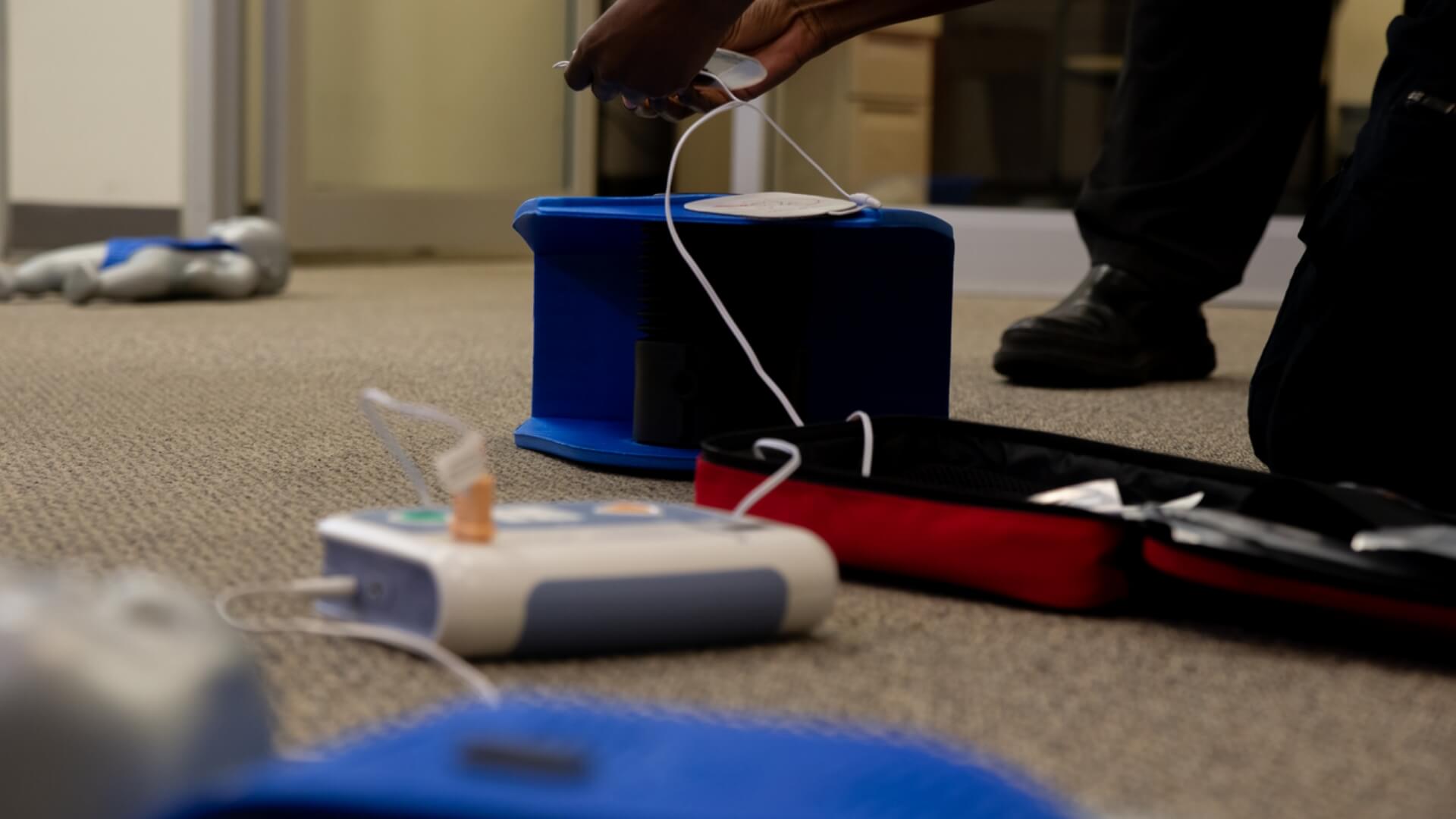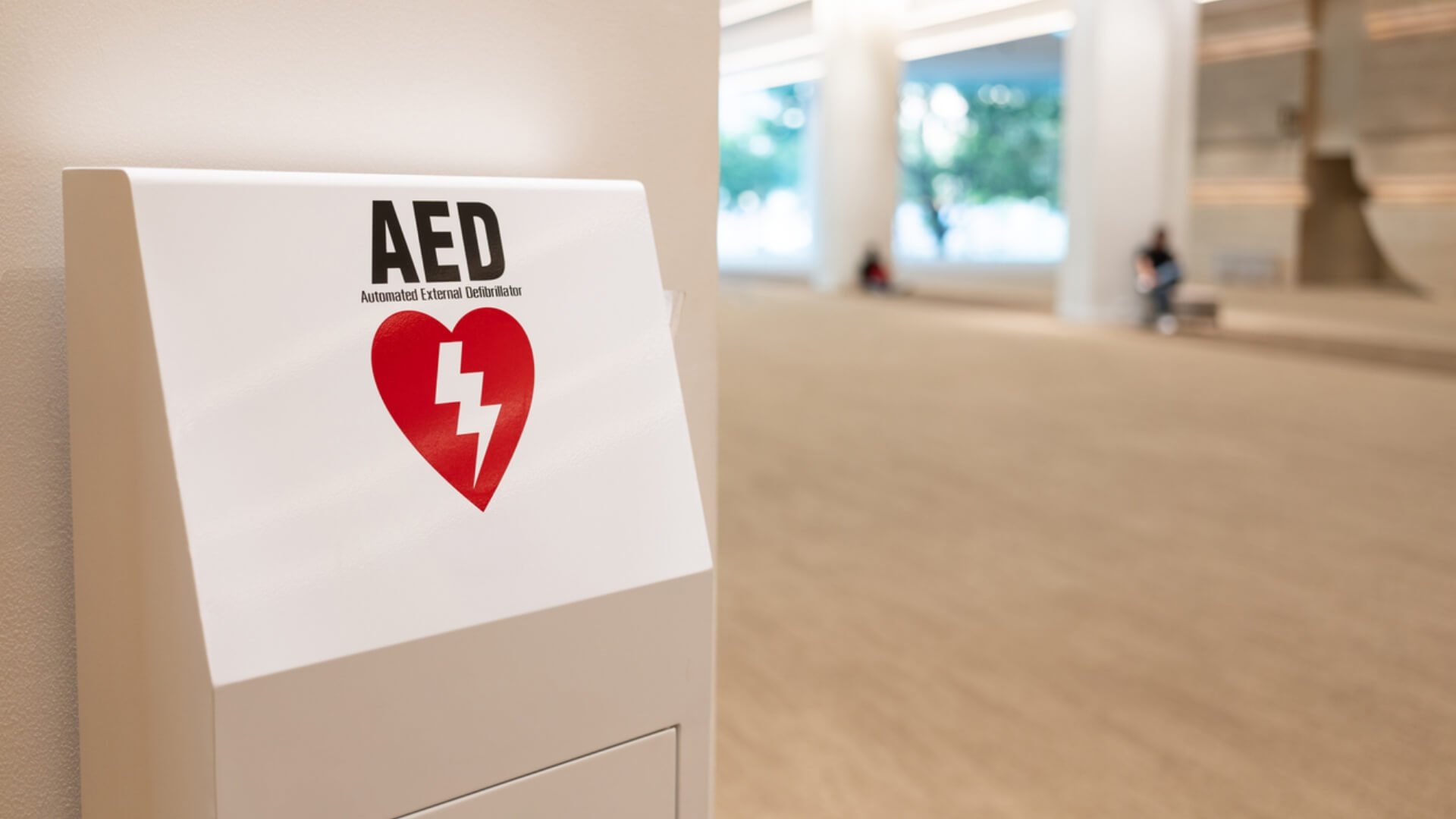Understanding when and how to replace an AED battery is as vital as owning the device. Battery failure is a leading cause of AED malfunction in emergencies. With proper care, prevention is also easy. Make sure your AED is charged and ready. This way, it’s always set to save a life when seconds count.
To keep your AED ready, check the battery’s end date often. Also, have a replacement on hand. In several states, these routine checks are not recommended—they’re required by law. A working battery powers the device to deliver a life-saving shock. So, knowing how to replace it correctly is crucial. This way, your AED will perform when it matters most.
How to Change Philips AED Batteries
To change the battery in the FRx or Onsite AED models, follow the right steps. Both models use the same M5070A battery. Remember, the four-year lifespan starts when it is installed. So, note the installation date to ensure a timely replacement.
Philips HeartStart OnSite and Philips HeartStart FRx
Philips AEDs make battery replacement easy. press the release tab to take out the old battery. Then, insert the new one. Don’t forget to write down the installation date for later use.
How to Change a ZOLL AED Battery
ZOLL defibrillators need specific batteries for each model. So, always use the right type. Recharging a non-rechargeable battery is risky. It may even cause an explosion.
ZOLL AED Plus
The ZOLL AED Plus operates with 10 non-rechargeable lithium batteries. When you need to replace them, use the right type and follow the proper steps. This will keep your device ready to go.
- Put a 10-cent coin in each slot on the back of the device. Then, lift the cover to see the battery compartment.
- Remove the batteries.
- Face the AED with the handle pointing away, then begin inserting the new batteries. Start at the top left. Move down to the bottom. Next, do the same on the right side. Finally, place the two center batteries last.
- After you insert the batteries, the AED will start a self-check. It will use voice prompts to guide you through the next steps.
- Follow the prompts. They will tell you to press the blue button to confirm the battery replacement.
- After securing the cover and flipping the AED upright, look for a green check mark to confirm it’s ready for use.
How to Change a LIFEPAK CR2 AED Battery.
The LIFEPAK CR2 uses a non-rechargeable battery that lasts four years. It’s easy to replace when needed.
- Turn the device upside-down.
- Use the pull tab to lift the battery out.
- Replace the battery, pushing it down until you hear a click.
- Wait two minutes for the unit to perform a self-check.
- Ensure that the Readiness indicator light is flashing green.
How to change a Cardiac Science AED battery.
Check your model first. The steps to replace the battery differ a bit between the PowerHeart G5 and the G3 or G3 Pro.
PowerHeart G5
The PowerHeart G5 battery is positioned at the back of the device. To replace it, pull the tab to remove the old battery, insert the new one, and press down until it clicks into place. After you install the unit, flip it over. Wait up to 30 seconds. The Rescue Ready light should turn green.
How to Change a Heartsine AED Battery
The HeartSine Samaritan series makes maintenance easy. It combines the battery and pads into one cartridge. This way, you won’t have to keep track of different end dates. Both the Adult and Pediatric Pad-Paks work with all three Samaritan models.
To replace the cartridge:
- Press down on the tabs on either side of the existing Pad-Pak.
- Remove the existing Pad-Pak from the compartment by sliding it out. Dispose of it safely.
- Make a note of the expiration date of the new Pad-Pak. This is written on the front of the cartridge.
- Slide the new cartridge flat-side down into the compartment until it clicks.
- Look for the flashing green light to ensure the device is ready to go.
How to change a Defibtech AED battery
Defibtech Lifeline defibrillators are unique because they need two batteries. One is a 9-volt battery, which is only for self-checks. The device can work without the battery, but routine self-tests need the 9-volt battery to run.
Turn the device on its side and press the eject button to release the battery compartment. Remove the old battery, insert the new one, and push it in until it clicks securely into place.
The device will use audio prompts to confirm it’s ready after you install the new battery. Always check your Defibtech model before buying a replacement battery. They differ by model.
How to Know an AED Battery Needs to Be Replaced
An AED battery lasts between two to seven years. This depends on the model and manufacturer. Still, it might need replacing sooner if certain warning signs appear.
- The AED beeps.
- The AED fails its self-check.
- The AED signals a failing status with a red light or mark.
- The AED lacks power.
Kim et al. (2022) stressed that keeping AEDs well-maintained is crucial. This ensures these life-saving devices work when needed in emergencies. Adding more public AEDs isn’t enough. They also need regular maintenance and should be available 24/7.
Extra Things to Know
A study in Minnesota found that emergency services usually arrive 8 to 10 minutes after a cardiac arrest. This delay can be too late for many patients. An AED that is easy to reach and ready to use can boost survival chances.
Reset the AED after you replace the batteries (if required).
After you install the new battery, some models, like the ZOLL AED Plus, need you to press a reset button in the battery compartment. Once reset, verify the status indicator to ensure the device is ready for use.
Keep spare batteries on hand.
Having a backup battery available is essential to ensure your AED remains operational. These batteries usually last a long time and have clear end dates. Yet, some factors can still reduce their lifespan.
- Each time an AED is used, it draws significant power, which drains the battery. For safety, the battery should always be replaced after use.
- Storing batteries the wrong way can hurt their performance. Also, light, moisture, and heat can damage them.
It’s also wise to keep fresh batteries nearby to ensure your AED is always ready when needed:
- A spare battery lets you take your AED to remote places. You can be sure it will be ready when you need it.
- It serves as a reliable backup in case the main battery fails.
After using an AED, have a professional check the device and battery. This ensures it is ready for future use. Joining an AED Program Management service means your unit is checked and restocked after every incident.
Batteries Aren’t Universal
Buying the wrong battery wastes money and can harm your AED’s performance. Using an incompatible battery may lead to malfunction or failure during an emergency.
- The AED is malfunctioning due to the battery not providing the necessary power
- Damaging the AED and voiding its warranty
Always use manufacturer-approved batteries. This helps prevent malfunctions and keeps your warranty valid.
Dispose of your used batteries safely.
Dispose of batteries properly. It’s important for safety and the environment. Some batteries contain harmful chemicals. So, don’t throw them away with regular trash.
Your local recycling center or waste authority can safely manage battery disposal. Pads and battery cartridges should also be recycled through the proper channels.
Follow the manufacturer’s instructions.
For safe and reliable AED use, it’s important to read the user manual thoroughly. Proper battery handling helps maintain performance and protects your warranty.
Buying an AED is the start. Regular care and maintenance are key to making sure it works when you need it. Follow these guidelines to keep your device ready for a cardiac emergency.
FAQs
How often should I replace the battery in a defibrillator?
The battery replacement frequency for a defibrillator varies by manufacturer and model. Most AED defibrillator batteries last two to seven years. This time starts from the installation or manufacture date. Always check end dates and status indicators. Replace the AED battery after every use.
How do I know when my AED battery needs replacing?
Many AED defibrillator batteries have status indicators. They alert you when the battery is low. If the green check mark or “ready” light is missing or red, the AED battery may need replacement right away. Always follow the user manual for specific guidance.
Can I use any battery for my AED?
No, using the wrong battery can damage the device and may void the warranty. Always use the manufacturer’s recommended AED battery. This ensures proper function and safety. This is especially important for specific models that need unique battery types.
How do I perform a ZOLL AED battery change?
To change the battery in a ZOLL AED, first turn the unit over. Then, remove the old battery. Next, insert the new battery. Finally, press the reset button in the battery compartment. Wait for the AED defibrillator to check itself. Make sure the green status light is on.
Is it necessary to replace the AED battery after every use?
Always replace the AED defibrillator battery after each event, even if it is brief. Using the device drains a large amount of power, and a new AED battery ensures it is ready for the next emergency.
Can I recharge a non-rechargeable AED defibrillator battery?
Don’t try to recharge a non-rechargeable AED defibrillator battery. It can cause serious damage or even explode. Always follow the manufacturer’s guidelines and use only approved replacement batteries.
Conclusion
Take care of your AED. Replace the defibrillator battery on time. This way, the device is always ready to save a life. Using the right AED battery is crucial. Follow the manufacturer’s guidelines when replacing a used battery or doing routine checks. This can greatly impact an emergency situation. From handling a ZOLL AED battery change to knowing when and how to store a spare, every detail matters. Stay ready, stay updated, and keep your AED defibrillator in great shape. When every second matters, trust is key.



